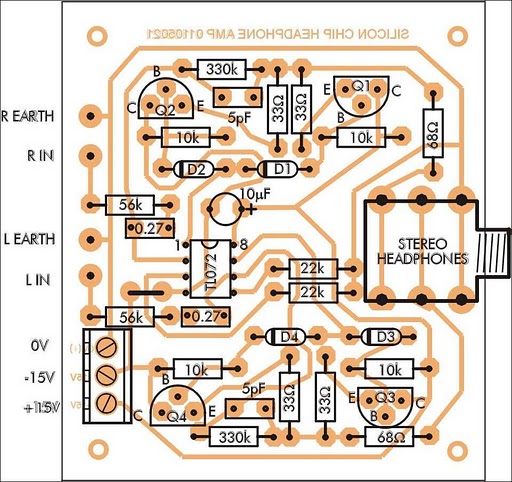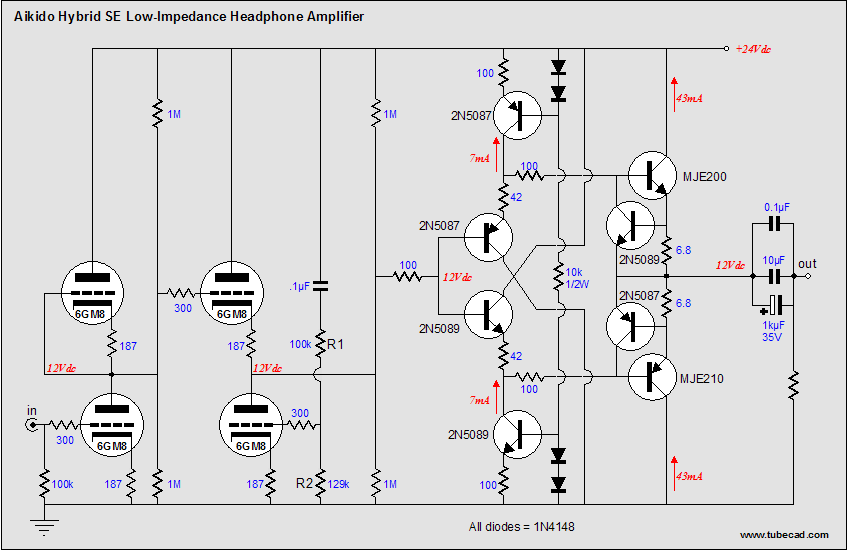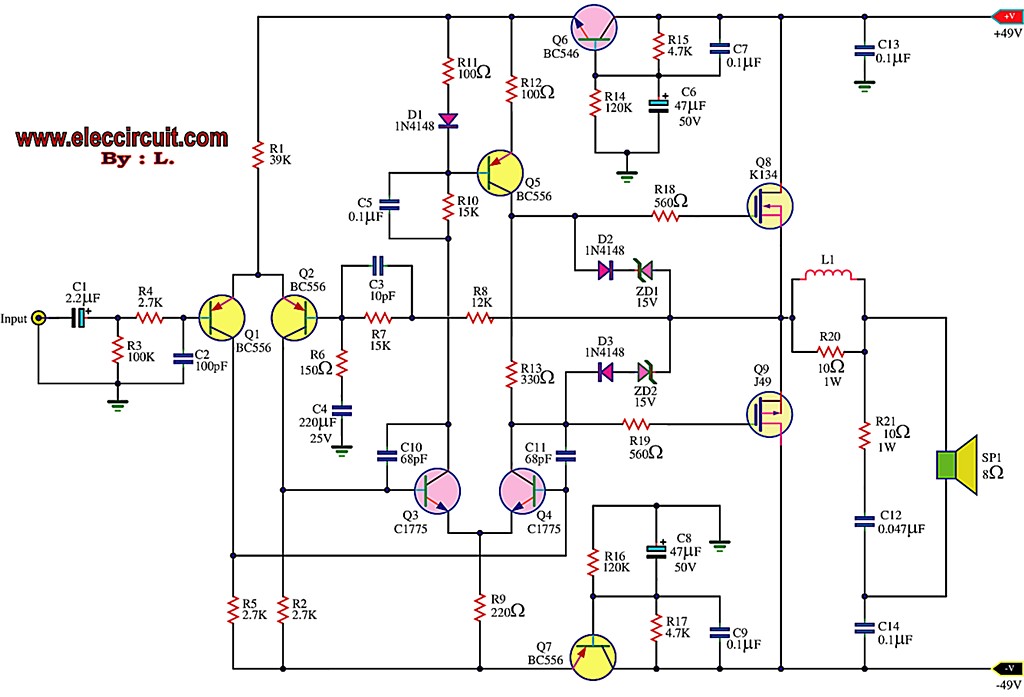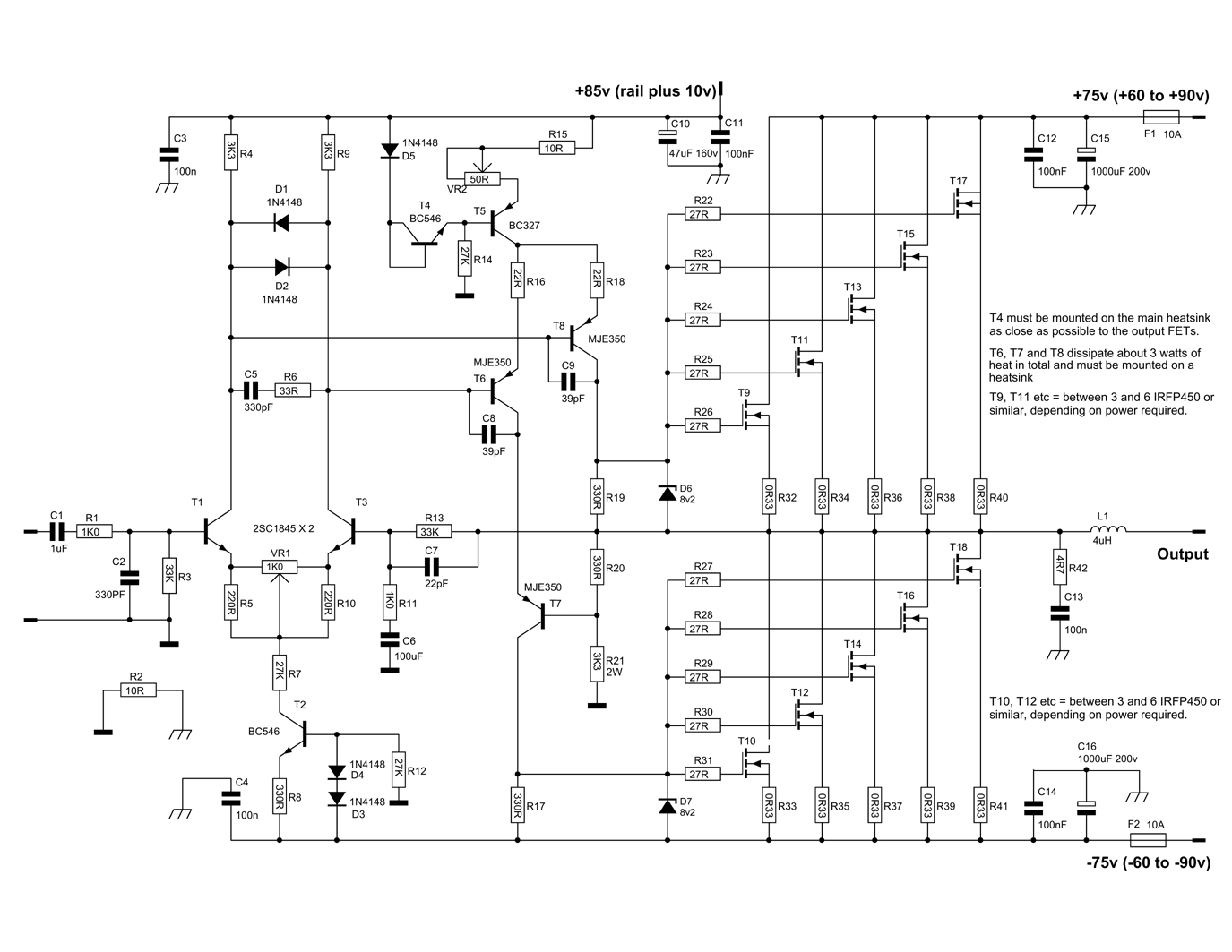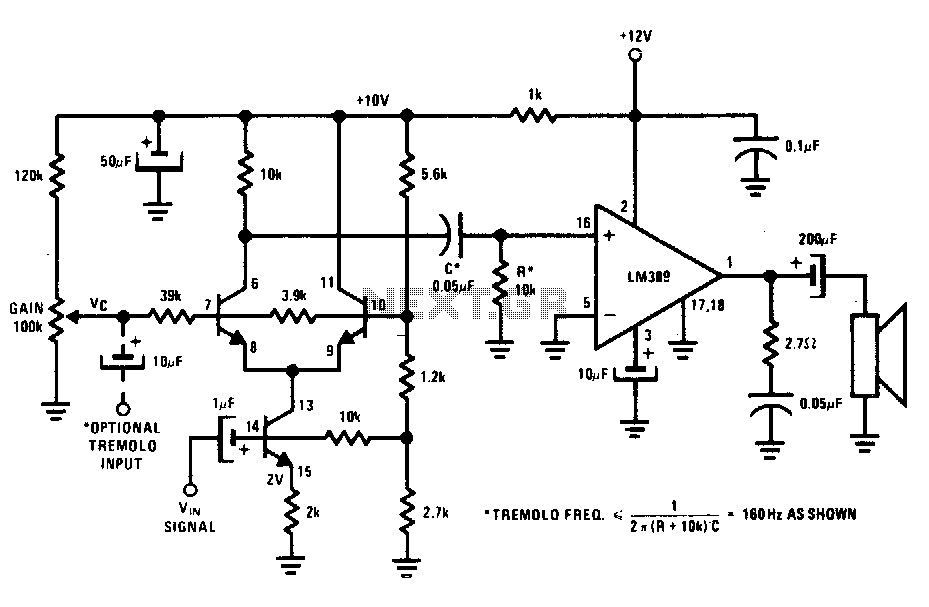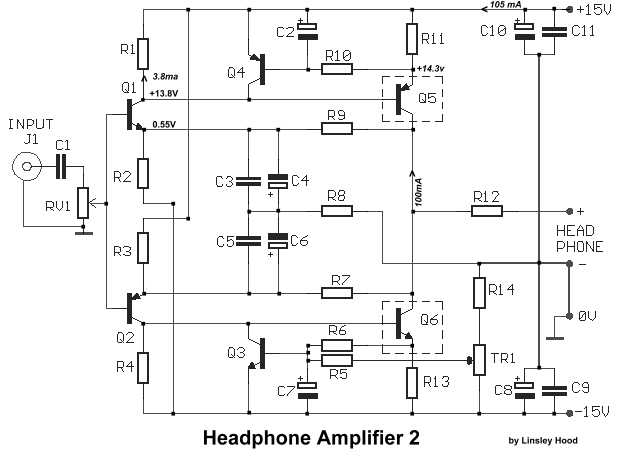
Mini Portable Guitar Amplifier
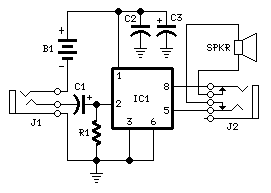
This small amplifier was intended to be used in conjunction with an electric guitar to do some low power monitoring, mainly for practice, either via an incorporated small loudspeaker or headphones. The complete circuit, loudspeaker, batteries, input and output jacks can be encased in a small box having the dimensions of a packet of cigarettes, or it could be fitted also into a real packet of cigarettes like some ready-made units available on the market.
The small amplifier circuit is designed to provide low power amplification suitable for personal practice with an electric guitar. The primary components typically include a low-noise operational amplifier, which serves as the core amplification element. The amplifier should be powered by a battery, which allows for portability and ease of use.
The input jack is generally a standard 1/4" mono jack, allowing for direct connection to the guitar. A potentiometer can be integrated into the circuit to function as a volume control, providing the user with the ability to adjust the output level to their preference.
The output stage may utilize a small loudspeaker, possibly in the range of 2-4 inches in diameter, which is capable of handling the low power output from the amplifier. Alternatively, a headphone jack can be included, allowing for silent practice. A simple toggle switch may be used to select between the loudspeaker and headphone output.
The entire assembly can be housed within a compact enclosure, with dimensions similar to a packet of cigarettes, ensuring ease of transport and discreet use. The design should also consider heat dissipation and electrical isolation to prevent any interference with the audio signal.
The circuit layout should be optimized for minimal size while maintaining a clear signal path, which is crucial for preserving audio quality. Proper grounding techniques should be employed to reduce noise and ensure stable operation. This amplifier design is ideal for musicians seeking a portable solution for practicing their instrument without the need for larger, more complex amplification systems.This small amplifier was intended to be used in conjunction with an electric guitar to do some low power monitoring, mainly for practice, either via an incorporated small loudspeaker or headphones. The complete circuit, loudspeaker, batteries, input and output jacks can be encased in a small box having the dimensions of a packet of cigarettes, or it could be fitted also into a real packet of cigarettes like some ready-made units available on the market.
🔗 External reference
The small amplifier circuit is designed to provide low power amplification suitable for personal practice with an electric guitar. The primary components typically include a low-noise operational amplifier, which serves as the core amplification element. The amplifier should be powered by a battery, which allows for portability and ease of use.
The input jack is generally a standard 1/4" mono jack, allowing for direct connection to the guitar. A potentiometer can be integrated into the circuit to function as a volume control, providing the user with the ability to adjust the output level to their preference.
The output stage may utilize a small loudspeaker, possibly in the range of 2-4 inches in diameter, which is capable of handling the low power output from the amplifier. Alternatively, a headphone jack can be included, allowing for silent practice. A simple toggle switch may be used to select between the loudspeaker and headphone output.
The entire assembly can be housed within a compact enclosure, with dimensions similar to a packet of cigarettes, ensuring ease of transport and discreet use. The design should also consider heat dissipation and electrical isolation to prevent any interference with the audio signal.
The circuit layout should be optimized for minimal size while maintaining a clear signal path, which is crucial for preserving audio quality. Proper grounding techniques should be employed to reduce noise and ensure stable operation. This amplifier design is ideal for musicians seeking a portable solution for practicing their instrument without the need for larger, more complex amplification systems.This small amplifier was intended to be used in conjunction with an electric guitar to do some low power monitoring, mainly for practice, either via an incorporated small loudspeaker or headphones. The complete circuit, loudspeaker, batteries, input and output jacks can be encased in a small box having the dimensions of a packet of cigarettes, or it could be fitted also into a real packet of cigarettes like some ready-made units available on the market.
🔗 External reference
